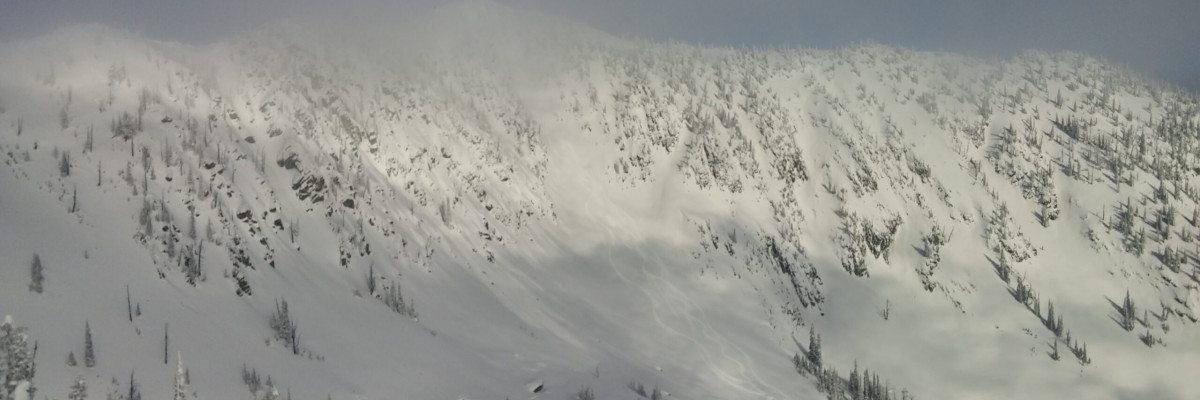The current avalanche danger is Moderate on wind loaded terrain for the northern portion of the advisory area. Small to large human triggered avalanches are possible in areas where windloading has occurred. On all other terrain and for the rest of the advisory area the avalanche danger is low.
Good morning, this is Logan King with the West Central Montana Avalanche Center’s avalanche advisory for Saturday January 28, 2017. This danger rating does not apply to operating ski areas, expires at midnight tonight and is the sole responsibility of the U.S. Forest Service.
Weather and Snowpack
This morning mountain temperatures range from 11-20 degrees. Currently winds at Point 6 are 17mph and gusting to 21mph from the west. Winds are gusting to 12mph from the SSW at Deer Mountain in the southern Bitterroot. No snow accumulated overnight across the advisory area.
Travis and Matt were in the Rattlesnake yesterday and found the primary concern to be windslabs that have developed over the last couple of days. With the new low density snow for transport and good winds, soft windslabs have formed on lee terrain and will be sensitive to human triggers. We also received a public observation of a small windslab that was kicked of in the Rattlesnake yesterday. Windslab growth has been more concentrated in the northern part of the advisory area and will be a more widespread problem in the Rattlesnake and Southern Swan and Southern Mission ranges.
I toured around Mt. Fuji yesterday and found widespread surface hoar growth and two layers of buried surface hoar. The buried surface hoar had light snow sitting on top of it but will be suspect if the snow overlying it has more cohesive qualities (video). Travis also found persistent weak layers to be a concern with the basal facets being reactive and propagate yesterday in areas where the snowpack is shallow (video). Be wary of the persistent weak layers near likely trigger points, such as shallow or rocky areas and cooler aspect where the facet growth is more prominent.
Observers near Lost Trail yesterday found the light snow on the surface continued to create small loose snow avalanches and sluffs. Keep in mind the consequences of these small loose snow slides in areas with terrain traps.
Avalanche and Weather Outlook
The weather today will be similar to yesterday with the possibility of intermittent snow flurries with minimal accumulations. The avalanche danger will remain the same throughout the day today.
If you are out in the backcountry, please feel free to share your observations on our public observations page, they are a great resource and are very helpful in producing the advisory. I will issue the next advisory on Tuesday January 31, 2017.
Ski and ride safe.














